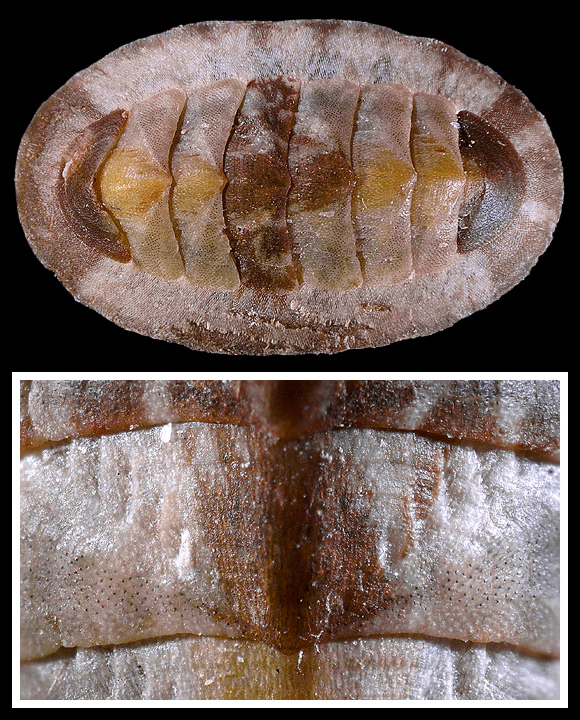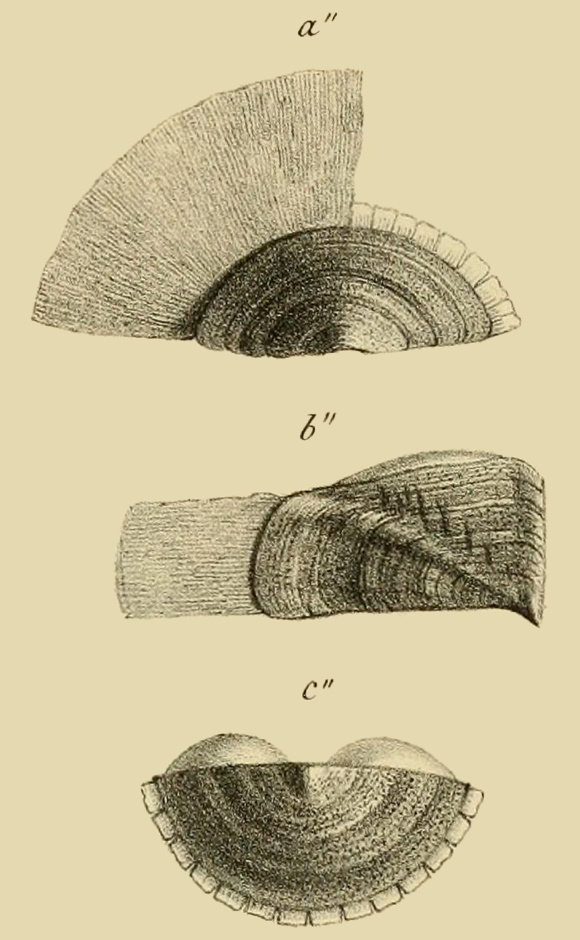
On hard substrate, from shallow water coralline algae down to the continental shelf and slope. Basionym: Chiton doriae.
Above: the species in J. Capellini: “Catalogue des oscabrions de la Méditerranée, suivi de la description de quelques espèces nouvelles”, Journal de Conchyliologie vol. VII, Paris 1859, plate XII.
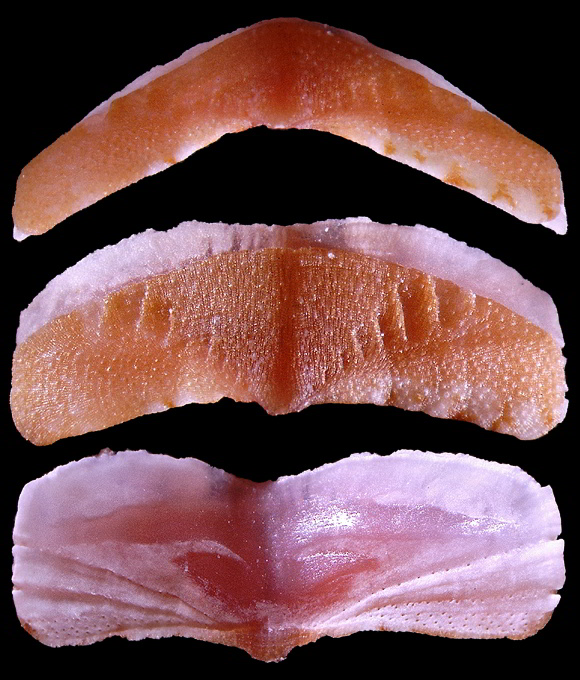
« Chiton with a well pronounced hull, the surface of which, examined with a magnifying glass, presents very small follicles and concentric streaks, which continue indistinctly on the median and lateral areas, without being interrupted by the hull, but only forming a sinus directed to the posterior part of the shell. The lateral areas are separated from those in the middle by a slight depression, and on their surface we still see two others, one less distinct than the second, and converging with the first. » – op. cit. p.326.
Intermediate plate collected in grit at 40m deep, off Le Scole, Isola del Giglio, Toscana, W. Italy. Width: 4mm.
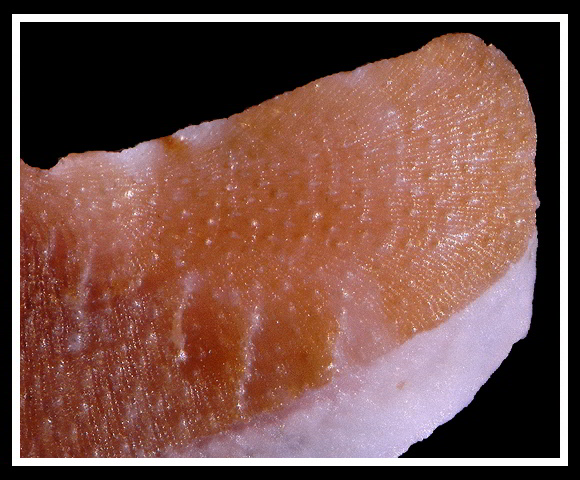
« On the median areas there are five to six longitudinal linear scars on each side. The anterior valve has sixteen teeth, the posterior fourteen, those in the middle have three on each side, corresponding roughly to the three divisions operated by the three depressions indicated. The edge is very developed, and consists of a membrane which results from an immense quantity of small fibers tightened the ones parallel to the others, with a direction perpendicular to the length of the shell. » – Ibid.
The “longitudinal scars”, or little hollows, on one side.
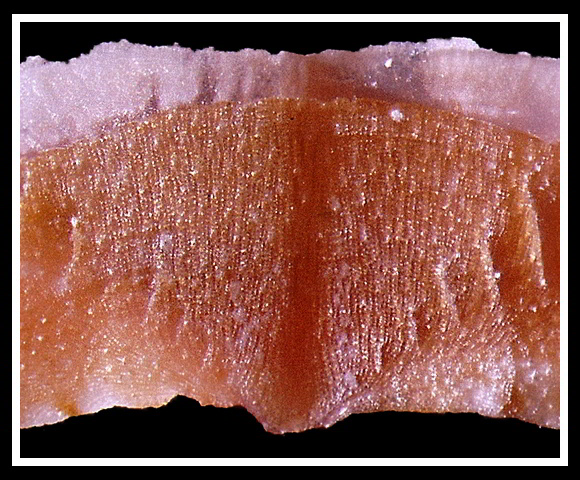
« Dedicated to my friend the marquis Giacomo Doria from Genoa, who helped me during my researchs on Mollusca from the gulf of La Spezia. » – Ibid.
The species bears these longitudinal scars even when juvenile.
